Affiliate links on Android Authority may earn us a commission. Learn more.
Android customization - WiFi File Transfer Pro
Published onAugust 7, 2014
Throughout a number of our Android customization tutorials thus far, there has been one simple little thing that has been taken for granted, the ability to get files, usually images, transferred to your Android device.
It may seem a trivial thing, but the ability to efficiently transfer files between your devices is important. For many of us, transferring files between our computer and our Android device means connecting a USB cable, if we had the foresight to bring one with us in the first place, downloading and installing the appropriate drivers and software, then enduring software update checks and data syncing before finally being able to transfer files to and from devices.
Perhaps my description is a little outdated, but I think you’ll find my solution is still very relevant; let’s look at WiFi File Transfer Pro for transferring files between your Android device and your PC.
WiFi File Transfer Pro is a simple yet powerful app which should be in everyone’s arsenal of productivity tools. As the name implies, you can leave your cables behind and enjoy fast data transfers between your devices.
Before we get started

Important: Your devices need to be on the same network for WiFi File Transfer to work.
Once installed, go ahead and open up WiFi File Transfer. The interface is pretty simple, but before you hit that Start button, head into Settings to configure at least one important little thing, security!
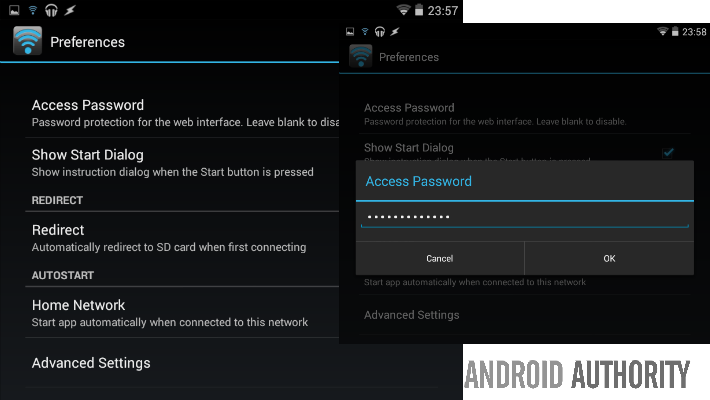
The first option within Settings is Access Password, tap this and input a password. This password will be required by all other devices attempting to connect to your Android phone or tablet. From there, if you think you’ll be using WiFi File Transfer on public or un-trusted networks, get into Advanced Settings and turn on SSL Encryption.
You may find that enabling SSL Encryption severely reduces the speed of WiFi File Transfer Pro. Hopefully you can operate on a secure network so to avoid this issue. Also, SSL Encryption in this app uses a self-signed certificate, this will result in browser navigation warnings, it doesn’t look good, but just verify that your URL is accurate and that your security warning specifically says that there is a self-signed certificate (not a missing certificate) and you’ll be good. If in doubt, turn off SSL Encryption and try again on a secure network.
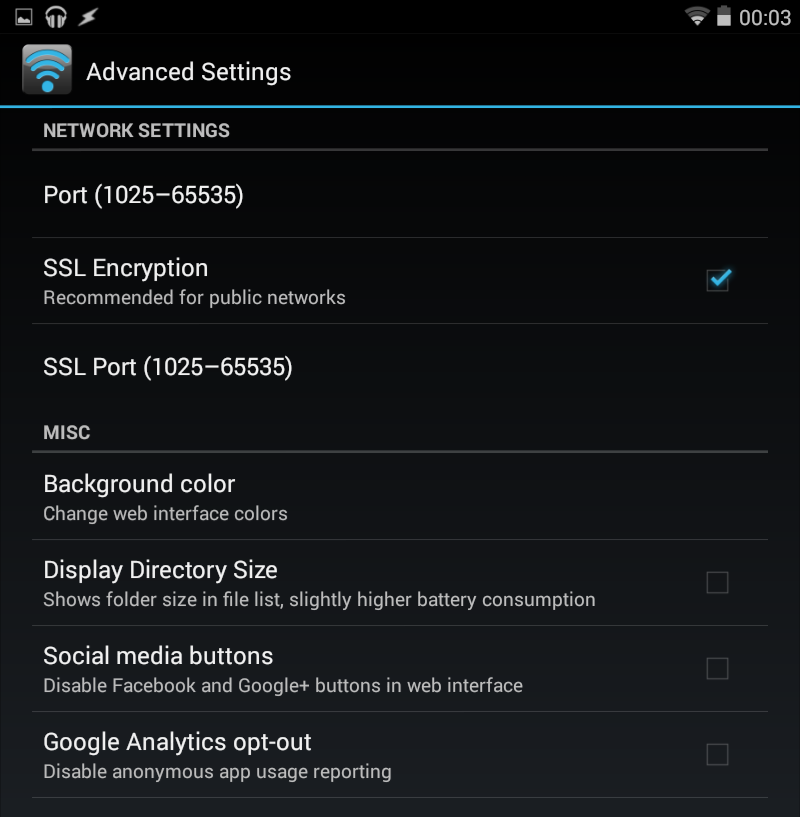
I would only recommend messing with the Port numbers if you’ve got other services that conflict. Usually, WiFi File Transfer uses Port 1234 for standard connections and Port 2345 for SSL connections.
Finally, I find the WiFi File Transfer Homescreen Widget very handy, but I transfer files almost daily. Just wanted to make sure you knew it was there.

Android Device
On your Android device, enter into WiFi File Transfer Pro and tap the Start button. If you have the widget setup, you can simply tap the icon on the left side of the widget.

You will be presented with a URL, it will look something like http://192.168.1.76:1234 or https://192.168.1.76:2345.
Other Device
Head on over to your laptop or desktop computer, or another Android device on the same WiFi network.
Open a web browser.
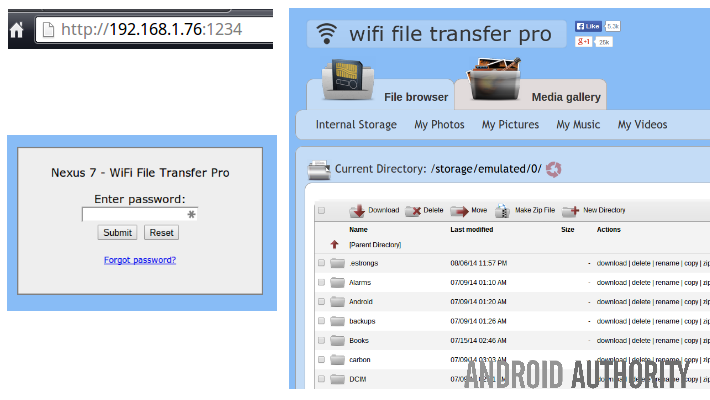
Enter the URL into the address bar.
Enter your Password, if applicable.
That is it, you are now connected and can begin transferring files between your Android device and the machine you’ve connected to it with.
From your connected web browser, navigate your Android device file system to find the files you would like to transfer. Click [Parent Directory] to go up a folder level, think of it as your back button when you go into folders.

Select the files to be transferred by clicking the check box on their left.
Click the Download button at either the top or bottom of the list.
If multiple files, choose whether to download them individually or as a zip file.
The files will now download in your browser, as if from any other website on the internet.
From your connected web browser, navigate your Android device file system to the folder that you would like to transfer the files into.
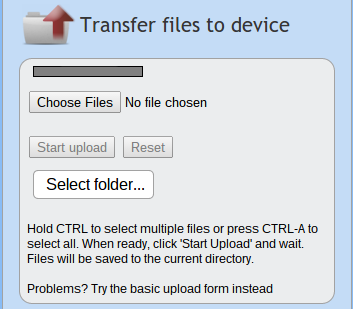
Click the Choose Files button (or the Select Folder button) and find the files (folder) on your computer that you would like to transfer.
Click the Start Upload button to start the transfer.
Pro Tip: although you are free to navigate your connected Android device’s file system whilst files are downloading or uploading, I’ve found that it often enough breaks the file transfer. I recommend finding something else to do until the file transfer is complete.
There you have it, open up your Android device and check for yourself, the files are transferred and ready to roll.
When you are done, hit the Stop button in the app, then hit the Quit button in the bottom right corner to exit. If you were using the widget, simply tap that icon in the widget again.
Access to your Android devices files will be cut off on the connected computer, but the loaded page will still be visible until you click on something in it. Be sure to close that browser tab to keep things private.
What’s next
I only briefly mentioned that you can use any device with a modern web browser to access your files through WiFi File Transfer Pro. Primarily, a laptop or desktop computer will be your connection, but you can use nearly any Android device as well. Since the program has the power to delete files, I would avoid handing over the URL and password to others, but it can be done if needed.
Remember how I said any web browser? That includes the web browser on your smart TV or set-top box as well. Beside ‘File browser’ on the web interface is ‘Media gallery’. It is not magical, but is certainly a quick way to display your local media on the big screen.
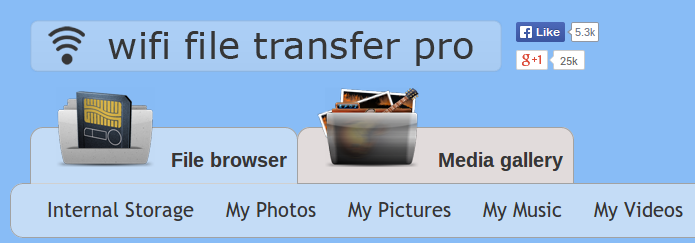
Next week
A while back, we used Tasker to control when your display goes to sleep. The tutorial covered display rotation as well, which I thought was pretty handy. Some of our readers expressed that they needed this functionality, but were either not fans of Tasker, or just wanted a free solution to tackle this display timeout problem. Next week in our Android customization series we’ll show you quickly how to use a free little app from the Google Play Store that controls your display timeout on a per app basis.
Did you get the chance to transfer some files using WiFi File Transfer Pro, how did you like the experience? There are many alternatives to WiFi File Transfer Pro out there, have you found any that have any major advantages over the rest?